Whether you’re going on a road trip or making a quick stop at the community center, it’s crucial that your car has a functional spare tire at all times.
It’s equally important that you’re able to get the tire down from under the vehicle when you need it. Some cars come with specialized tools to lower the spare tire and quickly make the change.
However, if the tool is unavailable for some reason, you can still bring down the tire and be back on the road in no time. Let’s take a look at how to get a spare tire down without the tool.
Removing a spare tire without the factory tool is easy when you follow these steps:
Removing a spare tire without a tool might appear daunting at first. However, with the right equipment and process, it’s not too difficult a task.
There are two methods to lowering a spare tire on a Ford truck. Each method uses different tools. As such, your choice will depend on the equipment you have to hand.
This method involves pulling out the key from the spare tire drop assembly and using stock spare tire tools to lower the tire.
To make up for the lack of the factory key, you will need some standard tools like joint pliers, small pieces of wood and an optional helping hand.
After you’ve collected the tools, follow the steps below to remove the spare tire.
As you already know, the tire hangs from the truck’s underside toward the vehicle’s rear. As such, you will need to go under to gain access.
Before you get under the truck, remember that safety comes first. Therefore, ensure that you park the vehicle properly, on a surface that’s as flat as possible, with all brakes engaged. These precautions are to prevent the vehicle from moving while you work under it.
These precautions are to prevent the vehicle from moving while you work under it.
Locate the guide tube under the vehicle. This is a long, black, plastic pipe near the tire. Twist the tube back and forth while pulling it in the direction of the vehicle’s rear to reveal the drop mechanism for the spare tire.
Still under the truck, move to the passenger side and pull down the tire on this side, putting the wood in the gap between the top of the tire and the truck bed frame.
At this point, you may need that optional helping hand to put in the wood while you hold the tire down.
The reason for putting in the wood is to give you easy access to the drop mechanism without having to move the tire away from the truck bed continually.
Put your hand through the space created by the wood and feel for the key to the spare tire drop mechanism. The key roughly resembles a wheel lug nut, and when you find it, pull it out using the jack or working pliers.
The key roughly resembles a wheel lug nut, and when you find it, pull it out using the jack or working pliers.
Sometimes, just pulling the key may not be enough, and you may need to wriggle the pliers as you pull.
With the key out, the hole left behind is almost identical to the jack crank. Thus you can use the stock tire tools to lower and remove the spare tire. Insert the jack crank into the hole and turn counterclockwise to lower the tire.
The second method differs considerably from the first. Accordingly, you need a different set of tools, including:
With the tools above, you can bring down the spare tire by following the steps below.
Attach the 14mm socket to the extender. You don’t need to use a high-quality socket, as any low-end one will do.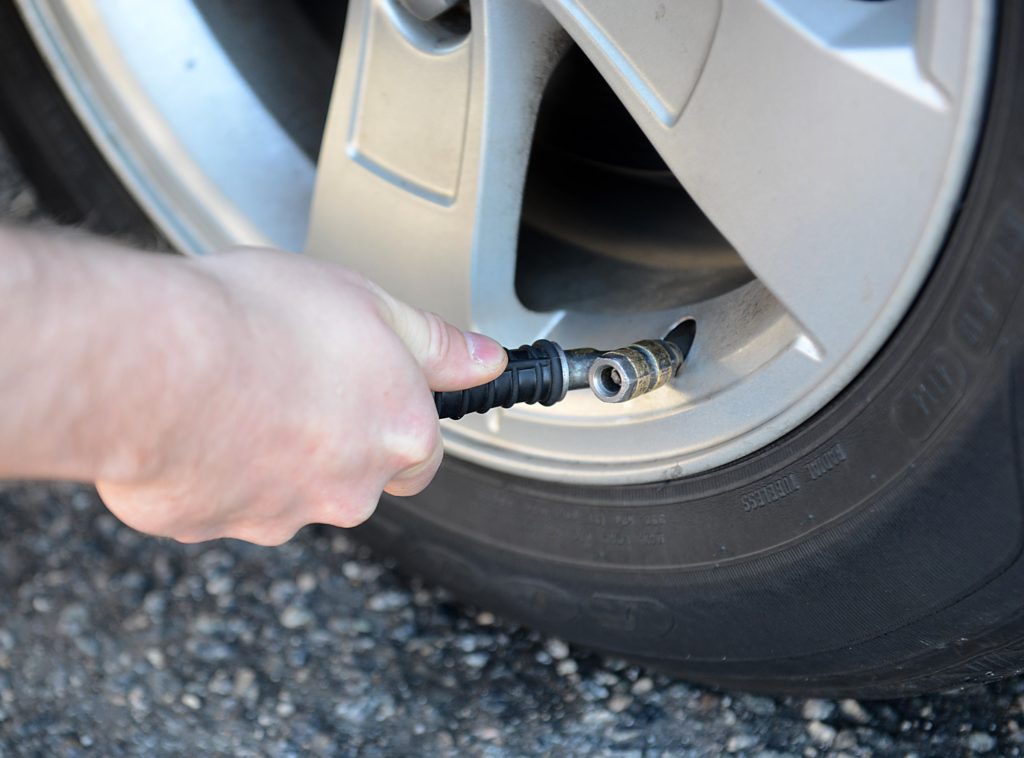 It’s also best to use an extender long enough to reach from the bumper to the spare tire. Aim for an extender that’s around 60–70cm long.
It’s also best to use an extender long enough to reach from the bumper to the spare tire. Aim for an extender that’s around 60–70cm long.
Insert the socket into the hole located on the left (or right, in some trucks) of the license plate. The hole leads directly to the key.
Use a hammer to strike the extender when you feel the socket touching the key. Hitting the extender pushes the socket over the key, providing a better grip.
Four to five blows from the hammer should be enough. Additionally, do not apply too much force to the hammer to prevent damage to the drop assembly. You don’t necessarily have to use a hammer; any object large and tough enough can serve.
With the socket firmly in place, use a wrench to turn the extender counterclockwise. The drop assembly key is similar to the one used on wheel lug nuts. Thus, it will turn as the socket turns.
Thus, it will turn as the socket turns.
It may be hard to turn the wrench at first, but it becomes easier as you continue turning, and the tire gets closer to the ground.
By the time the tire hits the ground, the key will be loose and you can remove it. Withdraw the extender from the hole, and use a flathead screwdriver to pry the nut out of the socket.
While the tire is now on the ground, you can’t use it until you detach it from the hoist. To disconnect the tire, reach into the large opening in the middle of the wheel. Next, locate the metal flange connected to the cable and turn it from a horizontal to a vertical position, pulling it out of the rim vertically.
Finally, the hole left behind by the key can fit a jack crank. Put the crank through the opening near the license plate till it gets to the hole vacated by the key. Turn the crank clockwise to raise the hoist back up
While Chevys store spare tires under the truck bed like other trucks, the removal process differs.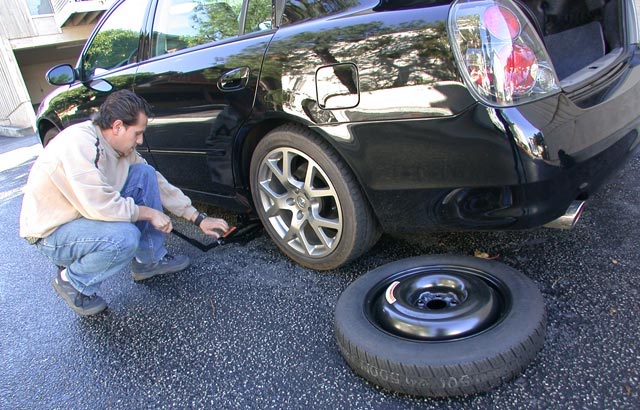 So, if you’re wondering how to lower spare tire on Silverado without tool, follow the steps below.
So, if you’re wondering how to lower spare tire on Silverado without tool, follow the steps below.
You will need a couple of tools, including an ignition key and a jack kit to make a chevy spare tire removal tool.
Like other trucks, the access hole is on the rear license plate’s right side and covered with a rectangular shaped plastic.
Newer models may have a lock over the hole as a security measure. In such cases, use the ignition key to remove the lock assembly covering the hole.
Open the jack kit and select the rod with the broader end and flanges on all sides. This rod is the “female” rod and the one you’ll insert into the now open keyhole.
Get another rod from the tool kit, and attach it to the end of the female rod to make it long enough to reach the spare tire from the bumper. Ensure that the press locks enter properly to prevent the rods from disconnecting while you’re turning it.
Insert the composite rod into the spare tire hole. Press and turn the rod simultaneously until the end locks into the cable crank.
Put a wrench on the other end of the extension rod and turn counterclockwise. The tire will begin to drop as you turn. Continue turning until the tire touches the ground when you can remove the cable flange from the rim.
Furthermore, you can use the procedure above on different models of Chevrolet trucks. As such, you can follow the steps if you’re wondering how to remove spare tire from Chevy suburban.
It’s always an unpleasant experience when you get a flat tire. It’s even worse when you can’t get the spare down for lack of the specialized factory tool.
However, there are other ways to bring down the spare tire even without the tool. These methods are straightforward and use common tools like extenders, flathead screwdrivers, sockets, ignition keys, chunks of wood, pliers and hammers.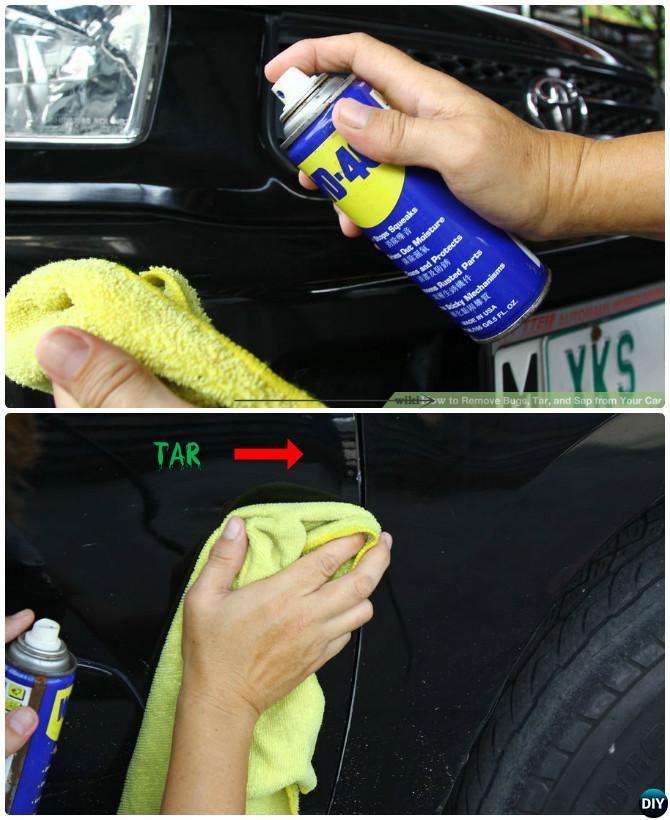
Thus, with or without a factory tool, you can get the spare tire out in minutes and be back on the road quickly.
by Smart Motorist
If you want to know how to lower spare tire without tool, you’re at the right place. This guide contains everything you need to know to complete the task. The step by step instructions given below doesn’t leave any room for confusion or mistake.
They are also easy to follow and practical. You don’t have to be a mechanic to put them to practice. Anyone who has ever held a tool in their life can use them to get their vehicle back on the road in little to no time. That isn’t where the good news end.
Our experts prepared these directives with the assumption that anyone using them would be on their own. That there might not be anyone assisting them in lowering their spare tire. It’s a good thing if you ask us as it means you can complete the task without any help.
Here’s what you need to do:
Before you go about reading our instructions, it’s important to make sure that you indeed have a spare tire in your vehicle. Most people assume this scenario without ever bothering to verify their assumption by looking at the spare tire. Such persons are often left with nothing at the end.
To verify the presence of the spare tire, discard the rectangular plastic cover under the passenger side of your vehicle’s license plate. If you can see an entrance for a key beneath the plastic cover, then you can be sure that your car does indeed has its spare tire.
That you’re going to lower the spare tire without ‘tool’ doesn’t mean you are going to go about the task with bare hands. Doing that would be counterproductive. You will still need some supplies to compensate for the lack of the key. Here’s what you’ll need.
Purchase a jack kit (without the jack). You can buy one from your local hardware store or Amazon. The next item on your ‘to-get’ list is an ignition key. Alongside the components of the Jack kit, the ignition key will loosen the tire’s connection with the wheel.
Experts tell us that one should never change tires on a slope. The same advice is applicable when you’re lowering a spare tire. Vehicles parked on an incline are extremely likely to go backward, thereby putting the safety of the person under the vehicle at risk.
Once you’ve done that, apply the hand brake. Turn on the emergency lights if you’re on the roadside. Put your vehicle in gear (if manual) or in parking (if automatic). Make sure that no one is sitting inside the car and put chocks or similar heavy objects behind all the wheels.
Follow these instructions to lower spare tire without a tool:
Picture in your mind the exact location of the spare tire. Or you can just fall to your knees and look beneath the vehicle. Fixate your attention to the back of the vehicle. There you’ll see a bulge protruding downwards. That is the spare tire that you’re going to lower.
The exact location of the spare tire will be just behind the tow hitch bar and under the bumper. You can further verify that the bulge is a spare tire by pressing your hand against it. The tire’s trenches will let you know that it’s indeed what you’re looking for.
Insert the ignition key in the hole beneath the plastic cover you discarded earlier. Drag the key towards you and you’ll end up detaching it from the hole. Doing this is vital as it will allow you to fix the assembly at the rear of your vehicle.
Drag the key towards you and you’ll end up detaching it from the hole. Doing this is vital as it will allow you to fix the assembly at the rear of your vehicle.
Get the crowbar and a couple of rods. One of the roads will have a wider end. Mechanics usually call this end the ‘female’ end. You’re going to insert this end of the rod into the hole that you disclosed in the previous step with the ignition key.
Doing this will help you in two ways. It will provide you enough space to add the male end of the pulley to the female rod. You will also be left with enough space to remove the bumper.
Look closely to make sure that the fitment between the female end rod and the 2nd rod is perfect. Then put this end through the hole.
You have by now one end of the rod into the hole. The other end, which is staying out of the bumper, should now be added to the crowbar. Follow that up by turning the crowbar in an anti-clockwise direction.
The other end, which is staying out of the bumper, should now be added to the crowbar. Follow that up by turning the crowbar in an anti-clockwise direction.
This will allow you to swivel the pulley and, by extension, the spare tire to the ground. Keep on rotating as long as the spare tire isn’t entirely on the floor.
This will let you detach the tire from below the vehicle. Keep one hand on the tire and the other on the middle gap of the rim. Apply full force to pull both ends apart and off the peak.
Lowering a spare tire without a tool isn’t exactly straightforward. You have to apply a lot of effort and the whole process will take about an hour for an amateur. Yet it is better than the alternative, which is to wait for hours on the roadside for help. You should therefore be aware of how to accomplish this task.
The spare wheel is located under the floor at the rear of the vehicle, as shown in the figure.
Attention
Since the spare wheel is rarely used, there is less wear on the tread and after installation, the friction coefficients of the wheels will be slightly different. Be careful when driving. We recommend repairing the standard wheel as soon as possible and replacing the spare wheel with it.
Periodically check the condition of the spare wheel (tire pressure, no cracks or bumps) to make sure it can be used in case of a problem.
Extraction and return
spare wheel (see here)
Align the front and center of the wrench with the wrench as shown.
2. Lower the spare wheel.
Remove the plastic plug located above the center of the rear bumper. Insert the wrench into the hole and, resting it on the winch groove, start rotating counterclockwise until the wheel is lowered.
3. Remove the spare wheel.
After lowering the spare wheel, pull out the pan on which it is located and carefully remove the wheel from under the vehicle.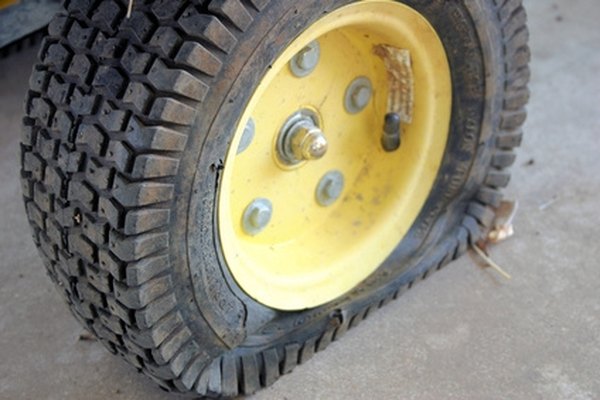
4. To replace the spare wheel, proceed in reverse order.
- All passengers must exit the vehicle.
- Park your vehicle on a firm, level surface where you will not interfere with traffic and where you can work safely.
- Apply the parking brake.
- Turn off the engine.
Warning
When the gear lever is in position N, it is strictly forbidden to raise the vehicle with a jack. Otherwise, the instability of the jack may cause an accident.
- Turn on the hazard warning lights and place the warning triangle behind the vehicle in accordance with the traffic regulations.
- Have the spare wheel, jack, jack arm, wheel nut wrench and wheel chocks ready.
Caution
When using a jack, wheel chocks must be used. In the absence of stops, large stones and similar alternatives can be used to fix the wheel.
1. Secure the wheel with the wheel chock.
(A) Damaged wheel
(B) Wheel chocks
Lock the wheel diagonal to the damaged one. If you lift the front wheel, secure the rear; if rear, fasten front. (The figure shows the situation when it is necessary to raise the left front wheel)
2. Remove the wheel trim cap.
Use a flathead screwdriver to remove the wheel cover as shown.
Caution
The wheel cover is made of plastic and must be removed very carefully. You can wrap the screwdriver with cotton cloth or other material to avoid scratches or damage.
3. Loosen the wheel nuts.
Using a wheel nut wrench, in the order shown in the illustration, slightly loosen the nuts in a counterclockwise direction (1-2 turns).
4. Adjust the height of the jack.
Place the jack on a level and firm surface. By turning the lever clockwise, raise the jack so that it reaches the car body in the place of the intended support.
5. Place the jack under the jacking point.
Adjust the position and height of the jack so that its head is fixed in place. Make sure the jack is securely fastened.
When using the jack, be sure to observe the following instructions. Failure to do so may damage the vehicle or cause the jack to move, resulting in serious injury:
• Be sure to stop the engine.
• Do not use the jack when there are passengers in the vehicle.
• The jack must be placed on a level and firm surface.
• Do not place objects under or on top of the jack.
• The lifting height of the jack must not be too high. It should be enough to change the wheel.
• Do not lie under a jacked up vehicle.
• When lowering the vehicle, be careful not to injure anyone.
6. Raise the vehicle
Connect the front and center parts of the spare wheel hoist and wheel nut wrench as shown in the figure above, and then insert the resulting structure into the hole at the end of the jack.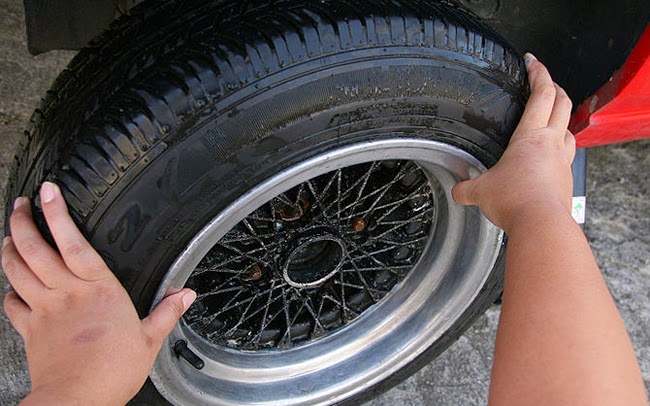
Turn the combination tool clockwise until the wheel is slightly off the ground.
Attention
First you need to slightly raise the car and make sure everything is in order. After that, you can go further.
7. Remove all wheel nuts and wheel.
Caution
• If you are laying the wheel directly on the ground, position it with the spokes up to avoid damage.
• Before installing the spare wheel, it is best to place the removed wheel under the bottom of the vehicle to prevent the jack from moving and causing accidents.
Installing the spare wheel
1. Remove dirt from the mounting surface of the wheel.
Remove dirt from the mounting surface before installing the spare wheel. Otherwise, while the vehicle is moving, the wheel nuts may become loose and the wheel will fly off.
2. Install the spare wheel and tighten the nuts evenly until they are fully seated on the wheel mounting surface.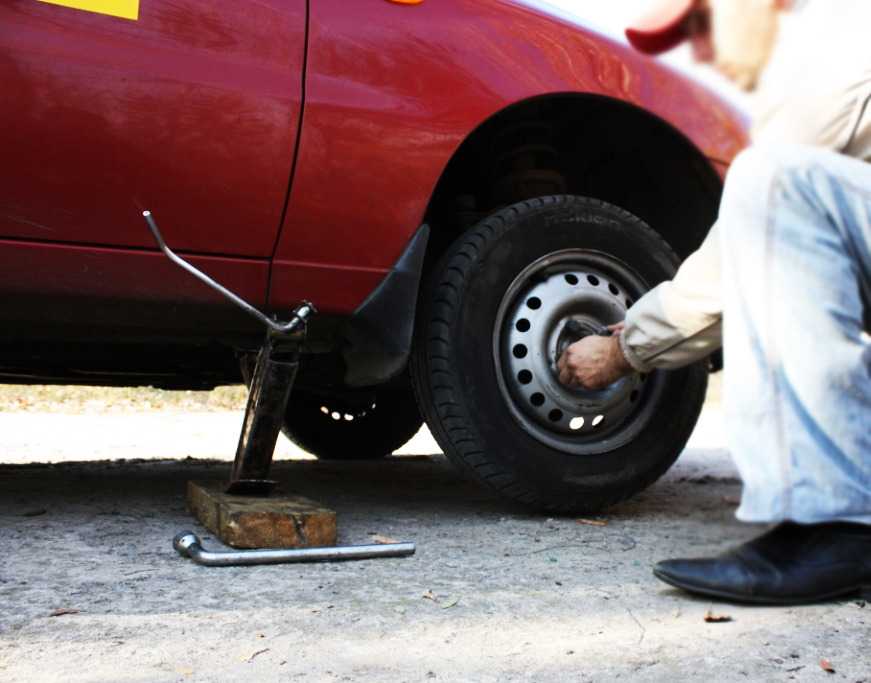
3. Turn the jack lever counterclockwise and lower the vehicle.
When lowering the vehicle, be careful not to injure anyone.
4. Tighten the wheel nuts with a wrench in the order shown in the figure.
Tightening torque: 135±15 Nm
After installing the spare wheel, tighten the nuts as soon as possible with a torque wrench to obtain the correct tightening torque. Failure to do so may cause the wheel nuts to loosen and come off, resulting in serious injury or even death.
5. Fit the wheel trim.
6. Put the tools, jack and the defective wheel in place.
Notes:
• Do not use damaged or deformed nuts or wheels.
• The wrench must be firmly attached to the nut, otherwise it may come off during operation and cause injury.
• Do not press the wrench with your foot or overtighten the nuts with other tools. This may damage the nuts.
• Do not apply grease or oil to nuts when installing. Overtightening can damage the nut and wheel. If the nuts are loose, the wheel may come off while driving and cause an accident.
Overtightening can damage the nut and wheel. If the nuts are loose, the wheel may come off while driving and cause an accident.
7. After changing the wheel of a vehicle equipped with a tire pressure monitoring system, contact the service center as soon as possible to initialize and adjust the system.
Getting a flat tire is one of the many automotive problems that can strike without warning at any time of the day or night. Even if you are sure that you have nothing to fear in the event of a puncture, since you have a spare tire, damage to the wheel will interrupt your movement on the road anyway and cause a lot of trouble. The worst thing is that if you have a spare tire, you will not be able to use it change to a damaged wheel if you do not know how to do it. In this case, you will have to call a help desk or a tow truck, which will cost a considerable amount.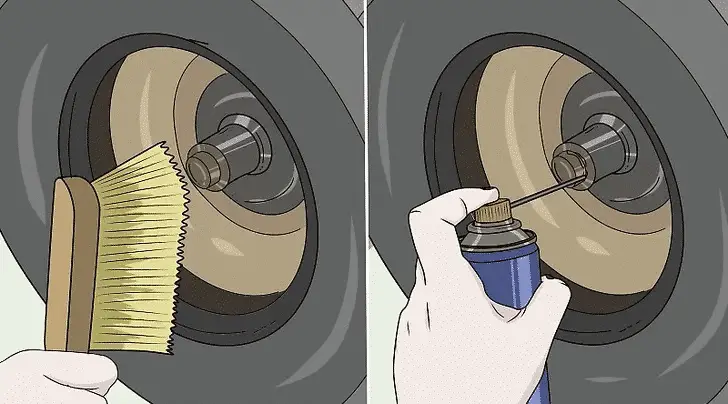 Maybe it's better to learn how to change wheels on a car?
Maybe it's better to learn how to change wheels on a car?
By learning how to change wheels, you will not only save time, but also significantly reduce your assistance costs. Our online publication offers you a guide with which you will learn that changing a self-damaged tire to a spare one is really not difficult.
But before we tell you how, here are some precautions you should take when changing wheels.
- Keep the spare tire in good condition . If you puncture a tire and your spare tire is not fit for installation, then this will bring unnecessary problems. Therefore, remember the spare wheel must be in good condition. When checking tire pressures, be sure to check the spare tire pressure as well.
- Remember that you must do this at least once a month. In addition, when checking the condition of the wheels on the car, do not deprive your attention of the spare wheel, which also should not have cracks and other damage that may occur due to temperature changes or tire age.
- Never change a tire on the freeway. Remember that changing a wheel on the highway, you risk being in a serious accident. After all, it is not uncommon when many inexperienced and aggressive drivers overtake cars on the right, which often leads to accidents as a result. Trust me, you won't be able to save yourself. Therefore, we advise you to call for emergency assistance in case of damage to the wheel.
- Also, if you have a punctured tire and you have the opportunity to remove the car from the freeway, then drive the car to a safe distance from the road and only in this case change the wheel . If this is not possible, then, having called for help, do not stay in the car, but move away from it at a safe distance from it.
- Use Tire Puncture Repair Kit. Many auto shops and tire shops sell special kits for the quick repair of tire punctures.
- Be sure to get them even if you have spare wheel . Remember that there are times when, having punctured a wheel, you are not able to jack up the car with a jack in order to install a spare tire.
Remember that there are times when, having punctured a wheel, you are not able to jack up the car with a jack in order to install a spare tire.
- Please note that many modern cars in recent years have ceased to be equipped with spare wheels. As a rule, instead of them, the manufacturer completes the car with special repair kits that can repair wheel damage.
- These repair kits will not repair many types of damage to tires. So don't count on them too much. Still, the "spare wheel" is a more reliable way to avoid problems on the road. Therefore, even if the manufacturer has not equipped the car with a spare wheel, we recommend that you purchase the wheel yourself. And of course, remember that a pump or an electric compressor must be in the trunk of a car.
- Be careful when jacking up the machine . Replacing a wheel is associated with raising the car with a jack, which is inserted into a special groove or "platform". If you are not careful or attentive, you risk that the car will either fall off the jack or move to the side.
If you are not careful or attentive, you risk that the car will either fall off the jack or move to the side.
Have you given up on the idea of learning how to change a wheel yourself? No. Then let's get to the most important part.
Before changing a wheel, make sure your car will not fall off the jack. To do this, make sure that the car is on a flat piece of land or asphalt. Also note that under the wheels of the car there should not be uneven surfaces, bumps or stones that can interfere with the process of jacking up the vehicle.
Including you have to make sure that the surface under the machine is hard enough. After all, by lifting one side of the car, its weight is redistributed to other wheels and in the case of a soft surface, the car can shift and fall off the jack. For example, be vigilant when changing a wheel on sand or when there is mud under the car.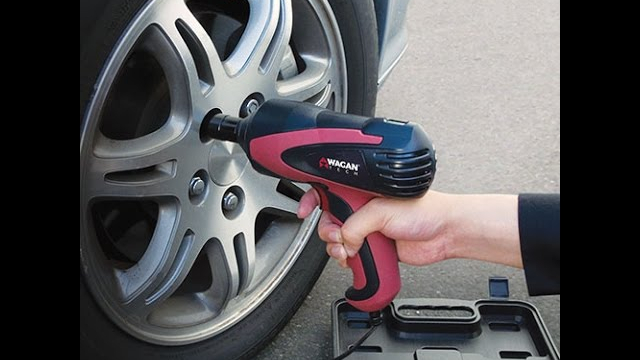 In order to understand whether the car can move on the jack, you need to slightly raise the car and shake it, watching the car and other wheels.
In order to understand whether the car can move on the jack, you need to slightly raise the car and shake it, watching the car and other wheels.
Along with the spare wheel, you must also carry a wheel wrench with which you can remove the wheel bolts . If you use secret bolts to protect the wheels from theft, then also do not forget to put a special key (secret) in the car so that you do not end up on the road in a hopeless situation when no one will help you except the tow truck.
If for some reason you do not know if you have a wheelbrace for changing wheels (for example, you just bought a car), then it is probably located next to the spare tire in the trunk, or in the glove compartment or in the side pockets of the doors .
wheel change . Including the manual on the car will tell you exactly where the special socket for the jack is located and how you can get the spare tire out of the car.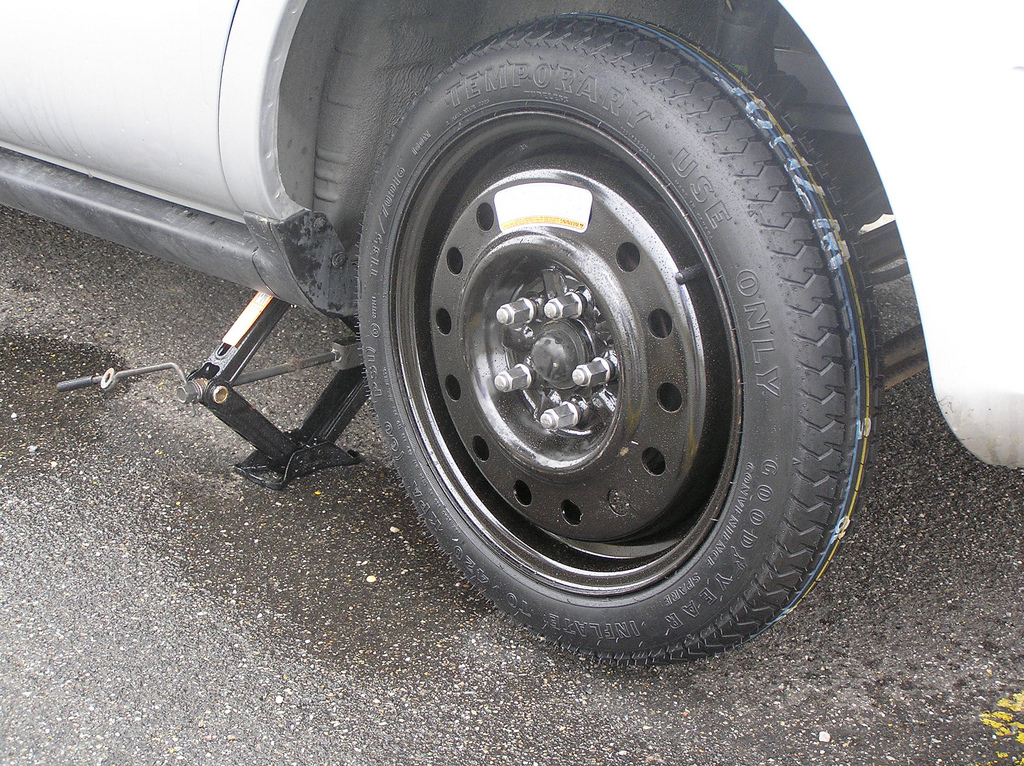
The most dangerous thing that can happen when changing a wheel is if the vehicle moves or starts to roll . To make sure this doesn't happen, you first need to apply the car's handbrake, locking the rear wheels.
Next, if your car is equipped with a manual transmission, you need to turn off the engine, put the gearbox in first or reverse gear. If your vehicle is equipped with an automatic transmission, then set the box to "P" - parking.
Many people think that putting the car on the "handbrake" is enough to start jacking up the car to change the wheel. But it's not. The fact is that the handbrake blocks only the rear wheels, while setting the gearbox to speed will also block the front drive wheels (if your car is front-wheel drive).
Having done all of the above, you must manually block the other wheels by placing something heavy under them to prevent the wheel from moving. Of course, you can put something heavy not under each wheel. It will be enough to put under the tire, which is diametrically opposed to the wheel being replaced.
Of course, you can put something heavy not under each wheel. It will be enough to put under the tire, which is diametrically opposed to the wheel being replaced.
That is, if you change the left front wheel, then you must definitely place something heavy under the right rear wheel to prevent the wheel from moving. It is advisable that you find bricks or stones and put them in front of the wheel and behind it, thereby blocking it from both sides.
Attention! This is a very important point . Be sure to loosen the wheel bolts before jacking up the vehicle. That is, by raising the car with a jack, you should effortlessly complete the process of unscrewing the bolts. In order to unscrew the nut or wheel bolt, remove the wheel wrench, install it on the wheel fastener.
It is likely that you will need to position the key so that you can place a foot or two on it to turn the key under the weight of your body. Once the nut or bolt has begun to move, you can manually loosen it further.
Once the nut or bolt has begun to move, you can manually loosen it further.
The most important thing is not to over-tighten the wheel bolts, as your task is only to loosen them first. The main thing is that the wheels are still attached to the car and cannot fly off when the car is raised.
The jack is usually located in the boot, either next to or under the spare tire, or in the special box . Also, in some cases, the jack may be located inside the cabin. Including there are also car models where the jack is under the hood.
In addition to loosening the wheel bolts, you must remove the spare wheel before jacking up the vehicle. The fact is that when the car is on the jack you should not rock the car in order to prevent it from falling.
Most modern cars have the spare wheel in the boot. As a rule, the trunk floor rises and a fixed spare wheel is located under it. In many cars, the spare wheel is fixed. How to remove the spare wheel from the car should be detailed in the manual for the car.
As a rule, the trunk floor rises and a fixed spare wheel is located under it. In many cars, the spare wheel is fixed. How to remove the spare wheel from the car should be detailed in the manual for the car.
Find the correct location for jack . Remember that in every car there are special places on the body for this. As a rule, such places are located under the front or rear windows (behind the front and rear wheel arches). If you are in doubt and do not know where exactly to install the jack, check out the manual for the car, which explains everything in detail.
Following the instructions in the manual, after placing the jack, slowly raise the car . In some jack models, this may require the same wrench that you used to unscrew the wheel bolts. While lifting the machine slowly, check the position of the jack under the machine.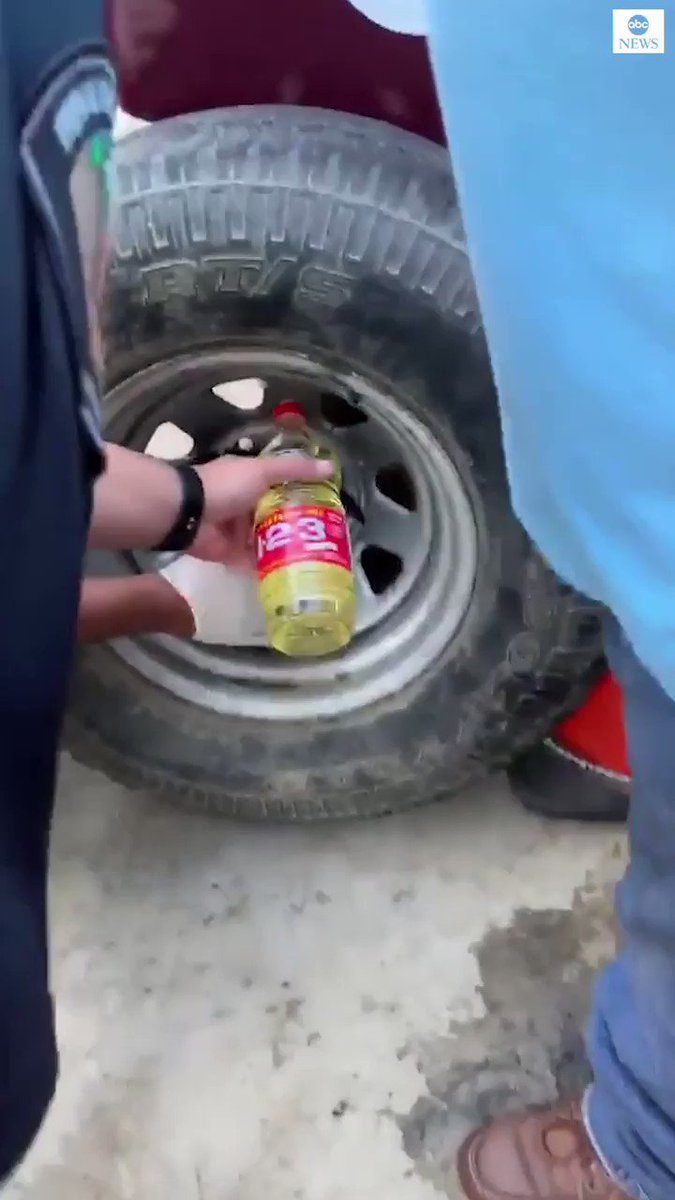 If you see that the jack has begun to move, then lower the car and try to rearrange it in a better position.
If you see that the jack has begun to move, then lower the car and try to rearrange it in a better position.
Now it is time to remove the wheel from the hub . Using a wheelbrace, loosen the wheel bolts/nuts, but not all the way. Then slide the wheel off the hub. Be careful. Remember that the wheel weighs a lot and if you do not remove it carefully, you can injure your back from gravity. Next, remove the wheel bolts and remove the wheel completely from the car.
The wheel is usually secured with four or five wheel bolts . Some models of cars have guides on the hub, through which you can easily hang the wheel on them first, and only then insert the wheel bolts.
True, many modern cars do not have such guides and therefore it will not be very easy to fix the spare wheel.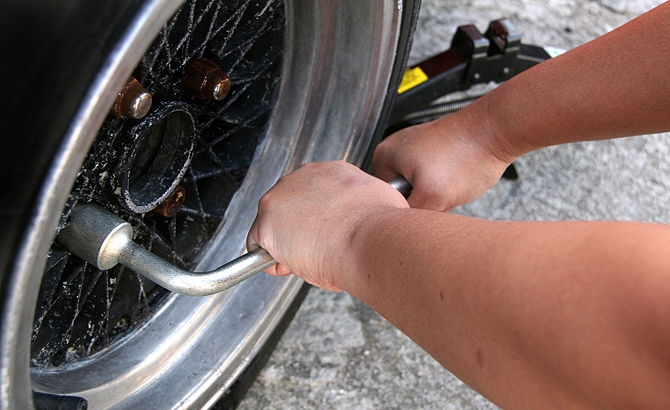 You have to lean the wheel against the hub and rotate it so that the hole on the rim aligns with the hole on the hub.
You have to lean the wheel against the hub and rotate it so that the hole on the rim aligns with the hole on the hub.
Aligning the holes on the rim, insert the wheel bolts and tighten them by hand . Do not use a wheel wrench.
Remember to tighten the wheel bolts only after the machine is on all four wheels on the ground or pavement.
After lowering the machine from the jack, proceed to tighten the wheel nuts/bolts . Manually first, as much as possible. Further with the help of a balloon key. For optimum bolt tightening, with the wheel wrench on the wheel bolt, use your foot and your body weight to spin the wheel as securely as possible. As a rule, this step of tightening the bolts must be done several times.
Put the damaged wheel back in the car, also removing the jack and wheelbrace in place . Be sure to remove any bricks or rocks from under the wheels you have placed to prevent the wheels from spinning while the car is on the jack. Your vehicle is now ready to continue on your way down the road.
Be sure to remove any bricks or rocks from under the wheels you have placed to prevent the wheels from spinning while the car is on the jack. Your vehicle is now ready to continue on your way down the road.
Please note that if the spare wheel is supplied from the factory, it is usually not designed for full use on the vehicle. Therefore, if you have installed a factory spare tire, do not accelerate above 60-70 km / h. In order to find out if it is possible to accelerate faster on the spare wheel, pay attention to the labels that are applied to the spare tire.
They are usually labeled by the manufacturer. If you did not find such warnings, then refer again to the manual for the car, which, for sure, has recommendations at what speed you are allowed to travel on the spare wheel.
If, after changing a wheel while driving, you hear a repetitive knock, stop and use a wheelbrace to make sure the nuts or bolts on the wheel you have installed are tight enough (as far as possible).